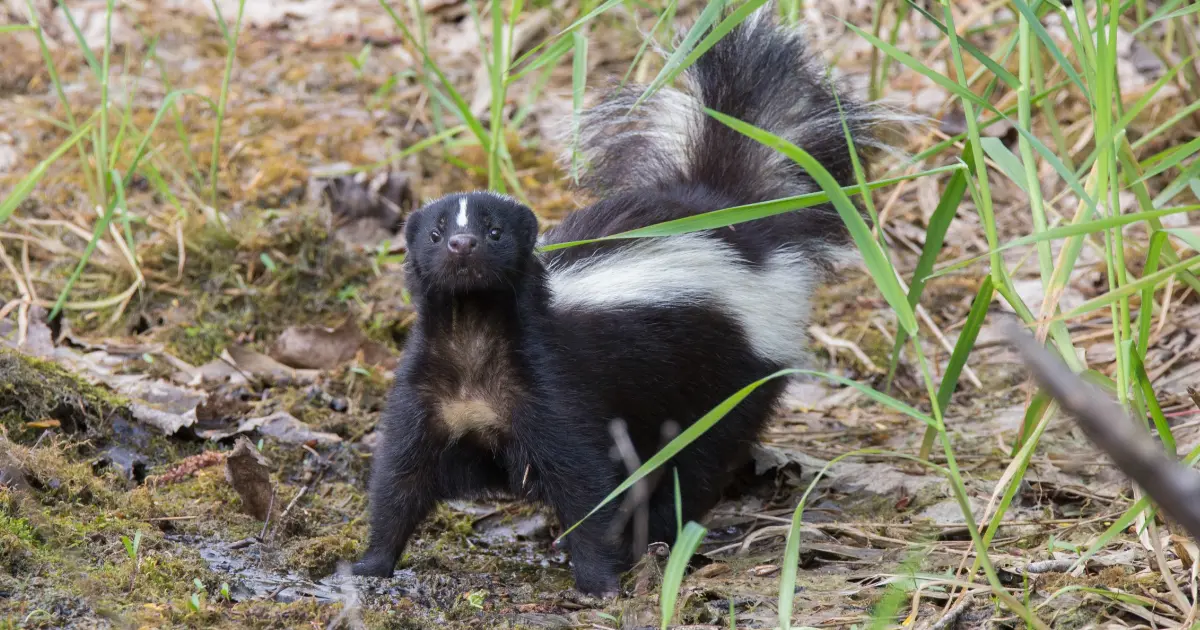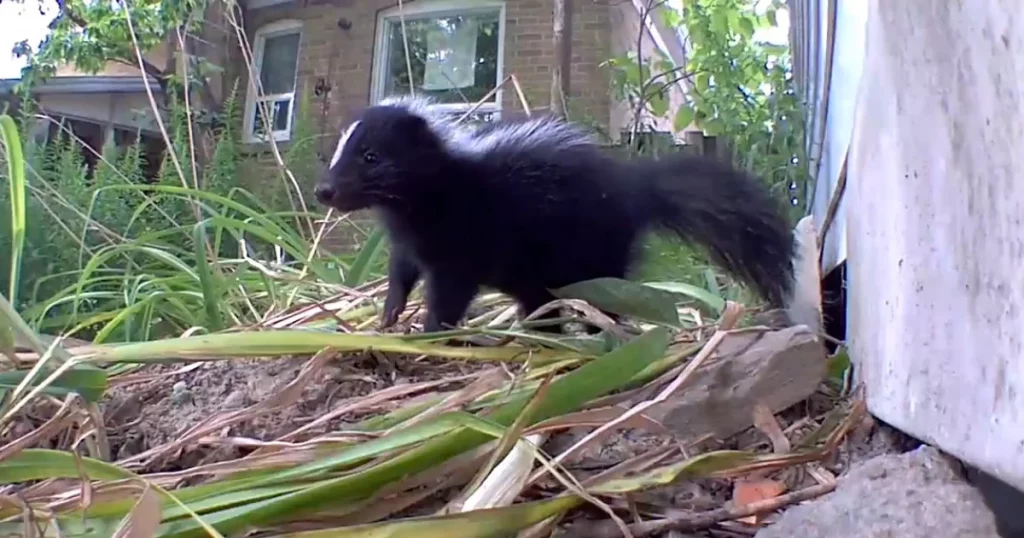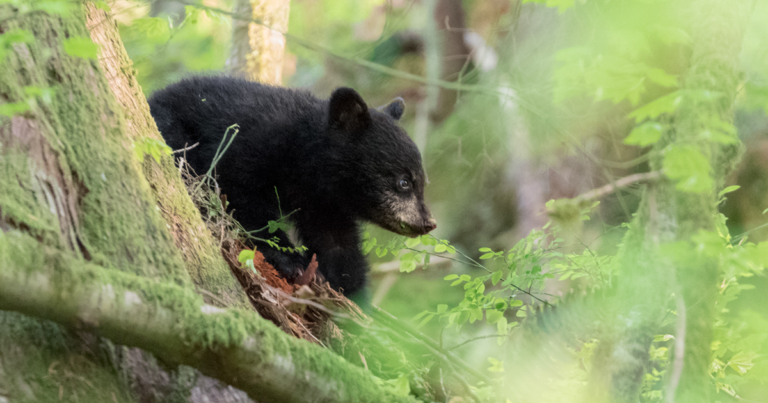
Photo by mirceax / Getty Images
By Réjeanne Lacroix
With their unique coats, skunks are easily one of the most identifiable small animals, but also one of the most misunderstood. Myths about these creatures are abundant and often lead to detrimental outcomes for the animals in human interactions. It is worth providing some basic knowledge about skunks so that falsehoods can be dispelled, and we can all learn to better coexist with these furry neighbours.
Misconception 1: Skunks are rodents
Though skunks share a variety of physical characteristics with members of this family, this is categorically untrue. Taxonomy originally placed skunks with the Mustelidae family that includes carnivorous mammals like badgers, ferrets, fishers, minks, wolverines and other similar species. This classification is still a rather contentious one though. Scientific research has advanced since that original classification and a published study based on deoxyribonucleic acid (DNA) sequencing further added to the research that skunks are unique and belong in a family separate from Mustelidae. So, skunks and their related stink badger cousins are not rodents, but rather members of the family Mephitidae.
Misconception 2: Skunks are aggressive
There is a misconception that skunks are needlessly aggressive and will escalate their behavior to the point of a potent putrid smelling spray automatically. Understandably, there is much to unpack with such a belief and how it became entrenched in some minds. Skunks have excellent senses of hearing and smell but lack acute vision. It is estimated that they can see clearly to only about 3 metres. They are nearsighted and in the words of wildlife ecologist Laura Simon, skunks “tend to see the world in terms of moving blobs.” In the case of human and animal interactions, slow movements that meander away from individual skunks do not prompt much of a reaction, but fast-moving actions (such as unyielding canines) that startle the animal are problematic. A threatened skunk will defend itself as well as its young — and understandably so — when faced with such encounters.
Misconception 3: Skunks automatically spray when disturbed
Just as skunks are not the aggressive 3.5-kilogram (on average) fur balls of menacing terror some consider them to be, they do not automatically resort to their best defensive tactic — spraying a sulfur-containing thiol compound from their perianal glands — at the first opportunity. It simply is not an efficient decision to spray at the first threat of danger as it usually takes the average skunk 10-14 days to refill the oily substance in their glands. Skunks are basically defenseless against predators and other hazards (including humans and dogs) during this period. These small animals save their secret chemical weapon for encounters that outlast a myriad of warning signs that include them puffing up their coats (particularly any white patches), stomping of feet, charging, hissing and/or growling. It is only when a threat ignores all of these actions that a skunk will be tempted to turn around, aim, and spray. This should be a lesson learned for any bold person or creature.
Misconception 4: All skunks have rabies
It is assumed that the myth that all skunks have rabies originated almost two centuries ago when an outbreak in the 1800s led to dogs and trappers becoming infected due to their interactions with the small animal. Additionally, and contemporarily speaking, skunks are often pinpointed as primary carriers of the rabies virus in certain locales, though the province of Alberta notes that there are few rabid skunks there! One must keep in mind that all mammals can be potentially exposed to and infected with rabies so animals that are not often associated with the sickness are often overlooked when the topic arises. It comes down to the fact that skunks experience greater opportunities to be bitten (and thus infected) by larger predators as well as smaller prey animals. Some skunks unfortunately carry the virus, but it is simply not true that all skunks are infected. It is only a small portion of the skunk population. The sad result of this myth is that healthy skunks are often killed because of the misconception that they are rabid simply for being seen in daytime hours.
Misconception 5: A skunk out in the daytime is ill
It is true that skunks are nocturnal animals, but if one is spotted during the day, it is not necessarily sick or infected with rabies. Indeed, if a skunk is active, alert, has a normal gait, and generally a healthy-looking specimen, it is typically okay and just out conducting some skunk business. Sometimes necessity forces skunks to wake from their daytime slumber to source food only available during daylight hours, to beat the competition with other nocturnal animals for food, or they are spooked out of their resting spot. It is also not an odd occurrence to see baby skunks venturing out in the daylight. So, basically, if a skunk is out in the sunlight, and it seems as if it is not in distress, it is best to leave it alone.

Misconception 6: Skunks are pests
Skunks are omnivores, so it is true that they may venture into gardens to take advantage of ground level produce or tasty plants. Having a varied diet means that skunks may visit poorly secured and stored trash bins too! However, a good portion of skunk diets include insects and small rodents, so these small mammals actually provide free pest control if left to their natural instincts. Skunks are known to use their large claws to dig up and eat the larvae of cutworms, Japanese beetles and hornworms — insects known to devastate garden patches. It can thus be assumed that if skunks are visiting gardens, it is a case were pest control methods in place have not done the job satisfactorily, and these small furbearers are taking an opportunistic meal. They can be a good friend to gardeners!
Skunks that wander into gardens are doing what comes natural to them in habitats they know. For example, skunks do not venture too far from the dens where they were born. They travel less than 3.2 km (or 2 miles) from this familiar spot. Therefore, it one suspects a skunk is visiting their lawn or garden for some grubby treats, it is up to property owners to skunk proof their property to foster coexistence. Fencing and limiting access to potential den sites (such as under a deck or backyard shed), properly securing pet food and garbage, keeping pets indoors when local skunks are active, and using means like motion sensor lighting are ways to prevent skunks from getting into sticky situations.
Human interactions with skunks can end much more positively if we collectively dispel the myths and misconceptions about this small furbearer. Skunks are not the aggressive smelly menaces that some make them out to be, but rather residents of nature that prefer to be left alone to scour for food and denning sites. Hopefully, addressing some of the main misconceptions about skunks will lead others to investigate this member of the Mephitidae family even more, ponder matters of skunk proofing, as well as lead to better outcomes in both urban and rural encounters.
This article was written by volunteer Réjeanne Lacroix on behalf of The Fur-Bearers. Would you like to be a volunteer writer? Find out more about volunteering by clicking here.
Works Cited
Almanac, “Skunks”, https://www.almanac.com/pest/skunks
Eduardo Eizirik, William J Murphy, Klaus-Peter Koepfli et al., “Pattern and Timing of Diversification of the Mammalian Order Carnivora Inferred from Multiple Nuclear Gene Sequences”, Molecular Phylogenetics and Evolution, July 2010 56(1) pp. 49-63
For Fox Sake Wildlife, “Do All Skunks Carry Rabies?”, 31 December 2019. https://forfoxsakewildlife.com/2019/12/31/do-all-skunks-carry-rabies/
Government of Alberta, “Human-Wildlife Conflict — Skunks”, https://www.alberta.ca/skunks.aspx
Jim Low, “State Agencies Urge Skunk, Rabies Awareness”, Missouri Department of Conservation, 6 February 2013. https://mdc.mo.gov/newsroom/state-agencies-urge-skunk-rabies-awareness
Lynne Warren, “Skunks: Notorious – or Not?”, The National Wildlife Federation, 27 March 2017. https://www.nwf.org/Magazines/National-Wildlife/2017/April-May/Animals/Skunks
Nancy Lawson, “No Need To Raise a Stink about Skunks”, Humane Society of the United States, 21 May 2016. https://www.humanesociety.org/news/no-need-raise-stink-about-skunks
National Capital Poison Center, “What Happens If a Skunk Sprays Me?”, https://www.poison.org/articles/what-happens-if-a-skunk-sprays-me-213
Scott Sutherland, “Watch for These Skunk Warning Signs To Avoid Getting Sprayed”, The Weather Network, 2 September 2021. https://www.theweathernetwork.com/ca/news/article/skunk-warning-signs-to-watch-for-to-avoid-getting-spayed
Toronto Wildlife Centre, “Skunks Out During the Day”, https://www.torontowildlifecentre.com/wildlife-emergency-rescue-hotline/conflicts-with-wildlife/common-skunk-problems/skunk-out-during-the-day/
Weiler Woods for Wildlife, “Incredible Skunk Spray. Everything You Wanted To Know”, https://weilerwoodsforwildlife.com/skunk-spray/
